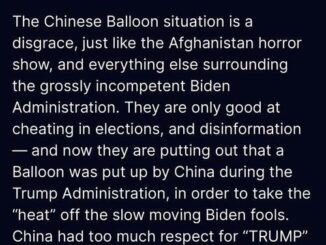
In a bold move to revitalize America’s energy sector, President Donald Trump has unveiled ambitious plans to quadruple U.S. nuclear power capacity by 2050, targeting an addition of 300 GW of new nuclear energy.
This overhaul includes executive orders aimed at reforming the Nuclear Regulatory Commission (NRC), accelerating the deployment of advanced nuclear technologies, and streamlining regulatory processes to kickstart construction on 10 large reactors by 2030.
While these initiatives promise energy independence, reduced carbon emissions, and a resurgence in domestic manufacturing, they have sparked alarms from critics over potential safety risks. However, a closer examination reveals these concerns may be overstated, particularly with innovations like factory-built microreactors that enhance safety through stringent controls and modern designs.
Are you from California or New York and need a tax break?
The Proposed Overhaul: A Push for Speed and Scale
Trump’s strategy is outlined in several executive orders signed in May 2025, including the “Reform of the Nuclear Regulatory Commission,” which calls for a comprehensive review of all NRC regulations within 18 months and sets aggressive deadlines for permitting and licensing.
Another order focuses on deploying advanced nuclear reactor technologies for national security, allowing construction on federal lands without full NRC oversight in certain cases.
The president has criticized the NRC for being overly cautious, emphasizing in a July press conference, “We’ll be very safe, but we’ll be fast and safe,” while pledging to appoint a “whole different group of people” to oversee the industry.
These reforms aim to address longstanding barriers to nuclear expansion, such as lengthy approval processes that have historically delayed projects. Proponents argue that deregulation will unlock affordable, reliable electricity, supporting sectors like AI data centers and military operations.
The administration’s vision aligns with bipartisan support for nuclear energy, as evidenced by recent funding and expedited licensing measures.
Who Is Raising the Alarms—and Why?
Critics of Trump’s plan have voiced significant concerns, primarily focusing on the potential erosion of safety standards through reduced regulatory oversight. Former NRC chairs and experts have warned that weakening the NRC’s independence could lead to “rubber-stamp” approvals, increasing the risk of accidents.
Christopher Hanson, the recently fired NRC chairman, highlighted this issue, stating that his termination was “contrary to existing law and longstanding precedent regarding the removal of independent agency appointees.”
Adam Blake, a representative from the Department of Government Efficiency, reportedly pushed for expedited approvals on reactors tested by the Department of Energy or the Department of Defense, fueling fears of compromised safety.
Organizations like the Bulletin of the Atomic Scientists have also critiqued the approach, arguing that Trump’s “wins” on nuclear power could result in losses for taxpayers and public safety by prioritizing hype over fiscal realities and genuine improvements.
The Council on Foreign Relations has noted that while bipartisan backing exists for nuclear advancement, increased deregulation might lower safety thresholds and exacerbate public backlash.
These alarms often reference past incidents like Three Mile Island, Chernobyl, and Fukushima, suggesting that cutting corners on regulations could invite similar disasters. Critics attribute nuclear’s slow growth not to overregulation but to high construction costs, citing examples like the $18 billion overrun at Georgia’s Plant Vogtle and the 2017 cancellation of two South Carolina reactors, which bankrupted Westinghouse.
Why These Alarms Are Unfounded: The Role of Innovation and Factory Controls
While safety concerns are understandable given nuclear energy’s history, they overlook the transformative potential of modern technologies and regulatory reforms. Trump’s deregulation push is not about recklessness but efficiency, reducing bureaucratic hurdles that have stifled innovation without necessarily compromising safety.
In fact, advanced designs like small modular reactors (SMRs) and microreactors, built in controlled factory environments, address many perceived problems head-on.
Take Nano Nuclear Energy’s breakthrough in microreactor technology as a prime example. The company, under CEO James Walker, is developing the first commercial microreactor in the U.S. in partnership with the University of Illinois, with construction permits expected soon.
Nano Nuclear Energy’s Breakthrough in Microreactor Technology | Future of Clean Power
These reactors, such as the Kronos model with capacities up to 60 megawatts thermal, are modular and factory-assembled, allowing for standardization and rigorous quality controls that minimize on-site errors.
Unlike traditional large-scale plants, which require site-specific licensing and extended build times, factory-built units can be licensed at the manufacturing stage and deployed rapidly to pre-approved sites.
Safety is inherently improved with features like molten salt reactors and TRISO fuels, which are self-contained and physically incapable of melting down.
This reduces risks associated with older designs and aligns perfectly with Trump’s reforms, which expedite licensing for such innovations.
By shifting production to factories, economies of scale lower costs, create high-paying jobs, and mitigate the overruns seen in past projects.
Experts note that these advancements could provide zero-carbon power for remote military bases or data centers, bypassing grid limitations and intermittency issues with renewables like wind and solar.
Moreover, the NRC has a 50-year record with no civilian reactor-related radiation deaths, underscoring that current standards are robust.
Deregulation, when paired with factory controls, doesn’t weaken safety—it enhances it by enabling quicker adoption of safer technologies.
Looking Ahead: A Safer, Cleaner Energy Future
Trump’s nuclear overhaul represents a strategic pivot toward energy dominance, with innovations like Nano Nuclear’s microreactors proving that safety and speed can coexist.
While alarms from former regulators and watchdog groups highlight valid historical lessons, they fail to account for how factory-built systems eliminate many risks through precision manufacturing and advanced engineering. As the U.S. pushes for re-industrialization and clean power, these reforms could finally unlock nuclear’s potential, delivering reliable energy without the unfounded fears holding it back.
For more on emerging nuclear technologies and energy policy, stay tuned to Energy News Beat.
Is Oil & Gas Right for Your Portfolio?
Crude Oil, LNG, Jet Fuel price quote
ENB Top News
ENB
Energy Dashboard
ENB Podcast
ENB Substack






